

|
Soundclip:
|
| See
Steve Khan's Hand-Written Lead Sheet |
Steve Khan's Acoustic Guitar Lead Sheet: "Both Sides Now"(Joni Mitchell)
Though it is not all that often, less and less with the passing of the years, occasionally someone will write to me and ask if I would be willing to play on something for them. Usually, for my participation, it would only be a one song project. Depending upon my mood on any particular day/evening, I might respond by saying something like this: "Sure, send me an mp3 of the song, let me listen, and then I can determine if I can hear myself contributing something that might fit within the context of that song." 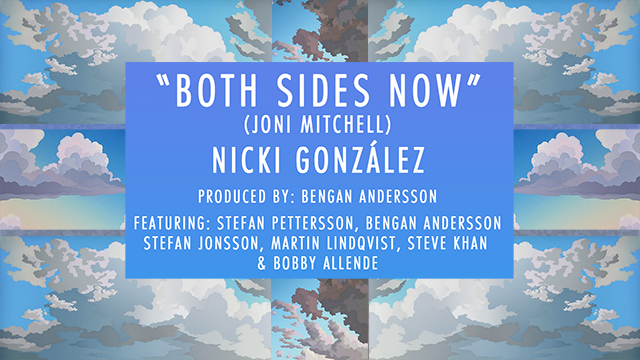
As things worked out, I had the pleasure to converse with Nicki about "Both Sides Now," and she was most forthcoming, sharing any number of stories with me, and some of them, I will share here. I told Nicki that, in my view: "This song is YOU! There is NOTHING without YOU, and your performance! It is EVERYTHING!!!" Nicki recounted this to me about the song itself: "I am shocked to learn that Joni was only 22 when she wrote this song. I first heard "Both Sides Now" when I was in middle school during the '80s. A friend of mine was writing a paper on it. I didn't love Judy Collins' voice, but her message really struck me (I didn't learn until much later that it was written by Joni Mitchell.) I remember relating to the verses, where she is a young, idealistic, hopeless romantic, but the rest of it was clearly for a more mature audience. I understood the message, but I didn't really understand-understand. So, revisiting it again some 40 years later, it struck me in a whole different way. I am now the wiser, more mature woman of the latter verses - a woman who has loved, lost, risked, won, failed, healed, and evolved. And the timing of this session was uncanny, because I was newly separated. My life and my heart were in a "hard reset." I was like, "Okay, Universe. I hear you." I shared with Bengan that the rehearsals were pretty cathartic. I could not sing it through without crying!" For me, as a listener, I too felt those same things. It was a very emotional listening for me, it still is! Having been privileged to have spoken with Nicki, it makes this piece about this song and this performance resonate all the more. While listening more in detail to Bengan's rough mix, I could hear that the song had received a very creative harmonic treatment, without going to far afield with the re-harmonization aspects. Eventually I learned that the arranger for this track was the great keyboardist Stefan Pettersson, who also played the electric bass and added a beautiful string arrangement. For me, this was magnificent work. The rough mix that Bengan sent me was pretty heavy in the presentation of the lush strings, and there was even a pedal steel guitar within it.  In other words, the track was already very dense, and I do not mean that in a negative way. It just sounded very full. And so, my initial sense was that there was NO ROOM/SPACE for me to contribute anything that would be usable - or that might enhance what was already there. Because of the strings and the pedal steel, I knew that my Strat Orchestrations would not be necessary - no matter how other worldly they can sound. It just wouldn't do much for this song as it was. However, I continued to listen over a period of days. In other words, the track was already very dense, and I do not mean that in a negative way. It just sounded very full. And so, my initial sense was that there was NO ROOM/SPACE for me to contribute anything that would be usable - or that might enhance what was already there. Because of the strings and the pedal steel, I knew that my Strat Orchestrations would not be necessary - no matter how other worldly they can sound. It just wouldn't do much for this song as it was. However, I continued to listen over a period of days.Nicki González echoed my impressions by expressing her own high praise with the following: "The strings swell so beautifully and invoke such EMOTION! The richness of the orchestration had me transfixed. I hung on every note." By this time, I had asked Bengan to please send me whatever kind of lead sheet he might have for the arrangement. And he was kind enough to comply. Once I had that in hand, I began to listen with a different set of ears. I could now see that the song had been arranged in Joni Mitchell's original key of F# major which she used to perform with a capo on the 4th fret of her acoustic guitar. However, to begin with, the guitar is tuned to an open D-tuning which, spelling up is: D-A-D-F#-A-D. With the capo in position, those open strings now become: F#-C#-F#-A#-C#-F#. With this newly found information, I realized that the acoustic guitar that had been already recorded and was placed on the right side of the mix, from what I could hear, it didn't seem to add in any of the steel-string acoustic touches, such as harmonics splashes or pedaling low notes, almost in the bass register. And this realization made me rethink what I could now possibly add. It took some time and a lot of creative thought and my initial idea was to create two acoustic guitar tracks that would, in the end, function as if they had been played by one guitarist. What I envisioned could never be played by a single guitarist because, to create the specific harmonics splashes, I would have to invent as many as 5-6 tunings of my own. In the end, I actually had to create 3 separate tracks that would function as one! The technical part of doing this was to label these 3 tracks as: [1] 5ths; [2] Harmonics and [3] Chords. The first task was to come-up with an open tuning in F# major that would give me some great harmonics. That particular tuning became: F#-G#-C#-F#-A#-F#. With this tuning, you have a nice F#maj9 chord which is perfect for "Folk" music because it is not too Jazzy sounding for the ears of some. Within this tuning, I figured out where the harmonic splashes might go, but also how I could play open sounding 5ths (F#-C#) on a separate track. So, I went through the entire song and addressed all of those spots. With the I-IV-V-I nature of the basic chords of "Both Sides Now," the IVmaj chord also becomes an essential component. As that chord happened to be Bmaj9, I decided to use a tuning that I first learned from singer/songwriter/guitarist Tom Rush, mostly from his 1968 album, "THE CIRCLE GAME"(Elektra). I am referring to a tuning that he used for not only the title song, also by Joni Mitchell, but his own beloved song, "No Regrets" and a wonderful instrumental that I always found very inspiring titled, "Rockport Sunday." All three of these songs are performed in "B-tuning" which is: B-F#-B-F#-B-D#. The harmonics produced are, for me, simply magical! Another tuning that I quickly created to accommodate the appearances of the Emaj9 sonorities that are used as a cadence in bar 8 of [I] and bar 4 of [I2] and finally during bars 4 & 8 of the [Outro]. To produce the ringing harmonics that tuning is: E-B-E-F#-B-E. When you are trying to put to use these kinds of harmonics splashes in conjunction with two other kinds of tracks (5ths & Chords), in order to have it sound if all of these parts were played by one player and, at the same time, a bit of Protools technology has to be employed. Mostly this involves the skillful and hopefully subtle usage of crossfades so that the harmonics, while seemingly ringing, are gone just as the next chord is appearing.  It requires some work, a bit of trial and error but, as I sit here today, I am pleased the results when these three separate tracks are taken as one musical expression. It requires some work, a bit of trial and error but, as I sit here today, I am pleased the results when these three separate tracks are taken as one musical expression.Back to my tunings and the harmonics produced, in bar 8 of [A], you see the sonority of G#/F# and here, to achieve the desired effect, I only retuned the inside 4-strings to: Ab-Db-Gb-Bb. I'm using the enharmonic spellings. In bar 2 of [A3], there is a favorite voicing of mine used as a substitute which is A#7(#9#5) and spelling up from the A-string you would have: CX-G#-C#-F#-A#. And so, once again, I just retuned the inside 4-strings to: G#-C#-F#-A# and those harmonics sing out for the length of that 1/2-bar. Though the chord is labeled differently on Bengan's lead sheet, in several spots, I heard that sound as a Phrygian sonority, in other words, Bm9/C# and I believe that what I did was to tune my low E-string down to C# and then I would have: C#-B-D-F#-B-D. Those spots on the chart are: bar 8 of [A2] and bar 8 of [A5]. Lastly, in bar 2 of of both [B3] & [B4], you have F#/E and for that sound, I tuned the guitar to: E-B-C#-F#-A#-E which creates quite a splash. Just too bad it only lasts a beat-and-a-half. At Letter [C] where Martin Lindqvist's emotive soprano sax solo appears, there is a nice modulation to D major, even though brief, it's provides yet another opportunity for harmonics at both the 12th and 5th frets. Here I tuned my Martin MC-28 steel-string acoustic to: D-A-D-F#-A-E. It is really a burst of fresh musical air to hear these harmonics, in a new key, as a new section appears. These splashes happen in bars 1 & 3. Without any prompting from me, Nicki added in her own thoughts upon hearing Martin's solo for the first time, "the soprano saxophone solo just soars!" The point of going into this kind of detail is to inspire some of you out there to explore any kind of creative thinking that is, sometimes, way outside the box. The results produced can really be worth it, IF one is working with an artist or producer who is not afraid of such things. Though it should be most obvious, the great inspiration here lies with my dear old friend and colleague, the masterful Ralph Towner. His tunings and harmonics are legendary! As time passed, one day it just came to me what I was really trying to do with this kind of acoustic guitar concept for this particular song. And, what I arrived at was this: I was trying to create an acoustic guitar part that would sound like Nicki might have played it accompanying herself. And IF, you can hear it that way, I think that the variety in dynamics and shadings paints that picture. I'm hoping so now. When one listens to Joni Mitchell's lyrics for "Both Sides Now" with its wistful and wise reflections on clouds, love and life one might think that the song and these observations were written by someone well into their 40s or beyond. But that notion is very, very far from the truth because Mitchell wrote this song when she was barely 22 yrs. of age. Some might say that she was just an old soul where her wisdom exceeded her chronological age? No matter what, this is a profoundly moving song, and there can be little doubt that this is why it has been around so very long. Here, I offer you the lyrics so that you can follow along as the song, within this arrangement moves along. [A] Rows and floes of angel hair And ice cream castles in the air And feather canyons everywhere Looked at clouds that way [A2] But now they only block the sun They rain and they snow on everyone So many things I would have done But clouds got in my way [B] I've looked at clouds from both sides now From up and down and still somehow It's cloud illusions I recall I really don't know clouds at all [I2]  [A3] Moons and Junes and Ferris wheels The dizzy dancing way that you feel As every fairy tale comes real I've looked at love that way [A4] But now it's just another show And you leave 'em laughing when you go And if you care, don't let them know Don't give yourself away [B2] I've looked at love from both sides now From give and take and still somehow It's love's illusions that I recall I really don't know love at all [I3] [A5] Tears and fears and feeling proud To say, "I love you, " right out loud Dreams and schemes and circus crowds I've looked at life that way [A6] But now old friends, they're acting strange And they shake their heads and they tell me that I've changed Well, something's lost, but something's gained In living every day [B3] I've looked at life from both sides now From win and lose and still somehow It's life's illusions I recall I really don't know life at all [C] Soprano Sax Solo 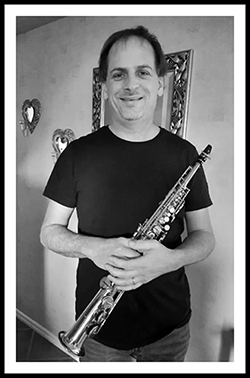
[B3] I've looked at life from both sides now From win and lose and still somehow It's life's illusions I recall I really don't know clouds at all [Outro] As I write this now, it is June of 2025, I have no idea what the finished mix is going to sound like or what Bengan will choose to present. As I was recording my acoustic guitar, I began to feel that there was a light percussive touch that would add greatly to the magic of what was already there. In order to create my own Protools session from Bengan's 2-trk. rough mix, I had to ask him if the piece had been performed to a particular beat. He responded that Stefan Pettersson had laid it all out at 96 BPM. This, of course, made perfect sense because, even with the floating nature of the song itself, I had always felt a pulse, and that is a good thing. Once I was close to being done, I floated the idea to Bengan that I felt that it would be the perfect touch to add Bobby Allende, my longtime friend and colleague, playing bongó from the top through to the end. I sensed Bengan's skepticism and resistance to this idea, and so I decided that the best way to make it happen so that Bengan could actually HEAR IT in real time, as real music - and not just an abstract concept would be to have Bobby record it and I would pay for it myself. 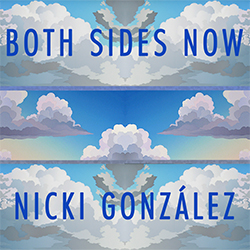 And so, I spoke with Bobby and he agreed to perform it in his home studio on Staten Island. After some thought and great care on his end, Bobby actually sent me back more than I had asked for, adding in conga and maracas. My hope, for the good of the song, was that Bengan will choose to, at the very least, use the bongó. To me, it sounds absolutely fan-tas-tic, and adds just the right element until Bengan's drums with brushes enter at Letter [B]. As I knew that he would, Bobby adds a gentle little roll under the last chord of piece as my own final harmonics splash is ringing out, and the piece fades out into the great cosmic distance - as it should. And so, I spoke with Bobby and he agreed to perform it in his home studio on Staten Island. After some thought and great care on his end, Bobby actually sent me back more than I had asked for, adding in conga and maracas. My hope, for the good of the song, was that Bengan will choose to, at the very least, use the bongó. To me, it sounds absolutely fan-tas-tic, and adds just the right element until Bengan's drums with brushes enter at Letter [B]. As I knew that he would, Bobby adds a gentle little roll under the last chord of piece as my own final harmonics splash is ringing out, and the piece fades out into the great cosmic distance - as it should.This particular one song project of "Both Sides Now" had some unforeseen cosmic connections to my own Joni Mitchell experiences. Firstly, it triggered a memory of mine that I had actually gone to hear Joni at the famed Troubadour on Santa Monica Blvd. in West Hollywood. When I remembered this, I eventually guessed that it must have been in 1968. And somehow, quite out of nowhere, the magical internet provided more information than I ever could have expected via Joni Mitchell's incredibly extensive website. It turns out that I saw her on June 4th, 1968, and the page at the site actually details her set list from that night. As you can now see via the image below, she performed some of the songs that would become memorable for so many including: "The Circle Game"; "Michael from Mountains"; "Chelsea Morning" and, of course, "Both Sides Now." In my memory of that night, Joni came out in a white lace dress, looking very angelic, with her guitar and played her songs. I don't remember much else other than that, but I believe that I had her just released debut album, "SONG TO A SEAGULL"(Reprise). The 2nd album, "CLOUDS" would not be released until 1969. To connect things even further for me, I remembered that, during my first years here in New York between 1970-72, as a struggling musician, I played some concerts accompanying singer/songwriter Judy Collins, who had already recorded Joni's "Both Sides Now" in 1967 as I had previously noted earlier in this piece. I wish that I could remember more about the circumstances but I can't. I don't remember what other musicians were involved, but I know that we played "Both Sides Now" and other songs that she had helped to popularize. Judy was a very, VERY nice person, already a seasoned performer, and that we rehearsed at her home, which I believe was on the Upper East Side of Manhattan. Though I could not locate the exact dates in my trusty datebooks during those years, I do know that it happened! 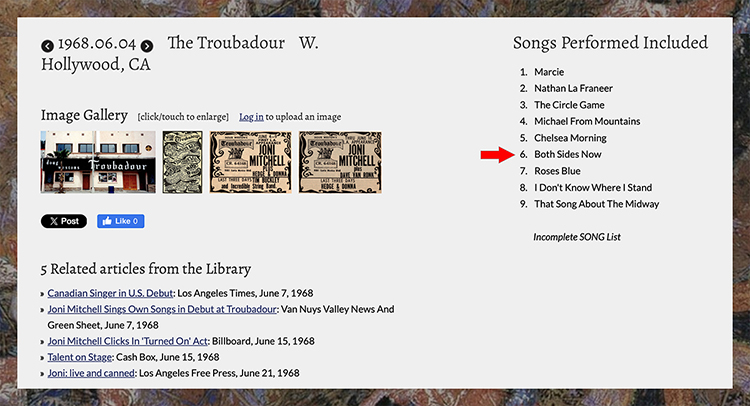
Another fantastic connection to this great old song and Joni Mitchell also came from her website and this was pointed out to me by old friend from childhood and beyond, guitarist/producer Tim Weston. When I sent him an early rough mix that I had done, I was also hoping that he would play it, because of Nicki's vocal, for his beloved wife, the remarkable singer, Shelby Flint. And no sooner had I done that, Tim sent another important fact directly from Joni's website which listed Shelby as one of her earliest vocal influences. We all believe, though it wasn't specific, that Joni had to have heard Shelby's own classic hit song from 1961, "Angel on My Shoulder." Though it was only my theory, when Joni spoke about vibrato, I felt that maybe she was taking a veiled shot at icon Joan Baez, who had, what could be described as, a quivering vibrato. When Tim, Shelby and I spoke about this very thing, Shelby also mentioned Buffy Sainte-Marie, who had a similar vibrato. The main thing here is that I feel that it was a great honor and tribute to Shelby's artistry as a vocalist that she was the only singer that Joni Mitchell mentioned. You can view the image that I have shared from her website below. 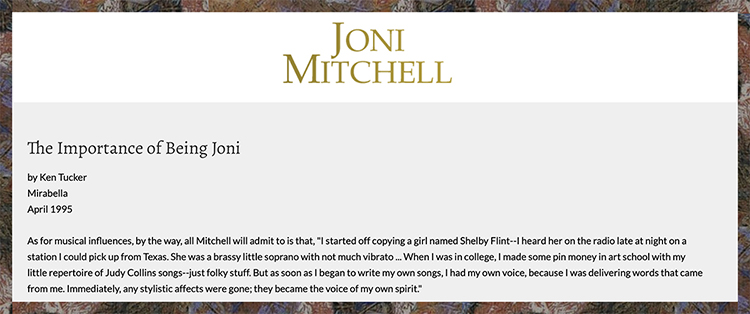
"Laws are Like Sausages. Better Not to See Them Being Made!" This quote comes from, of all people, Otto von Bismarck, and, I believe that, it becomes applicable to home recording in the age of digital recording. What I'm trying to say is that, if one had seen my actual process of recording the multiple acoustic guitars in multiple tunings to produce specific harmonics for certain moments within the arrangement of "Both Sides Now" - I think that the observer might have found it to be as ugly as seeing sausages being made!!! Yes, of course, it's perfectly O.K. to be laughing now! As I have been preparing and writing this piece, at various times, 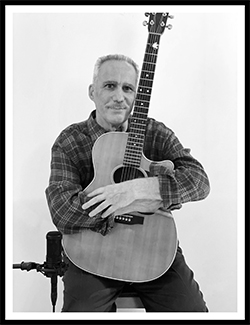 I still have absolutely no idea what Bengan's final mix and vision for Joni Mitchell's "Both Sides Now" will actually be. In the end, for those of us who plays small roles in the larger musical picture, the goal of such work always remains the same. And that is to: "Serve the song!" Just do what is right for the song as you hear it - nothing more, nothing less. I still have absolutely no idea what Bengan's final mix and vision for Joni Mitchell's "Both Sides Now" will actually be. In the end, for those of us who plays small roles in the larger musical picture, the goal of such work always remains the same. And that is to: "Serve the song!" Just do what is right for the song as you hear it - nothing more, nothing less.As I tend to get involved with less and less projects, I find myself often getting a bit too attached to what I played or contributed and just how it might serve the piece best if used properly. But, when one's real involvement stops at the moment that you send off your audio files and they are received. Likely as not, you will never be consulted about a mix until everything is done. Most of the time, I don't think that producers like hearing back from musicians or getting them more involved in production than is necessary. though I always try to see the bigger picture and view the project as a whole, one can't help but form a concept about what might be the best possible blending in a mix of all of the elements present. I believe that anyone who has been doing this for a long time, you can't help but having feelings about a final product. Though I try not to be, more often than not, I am disappointed with how things turn out. No matter what, just know that, for me, the key elements here are Joni Mitchell's beautiful song, "Both Sides Now" and her enduring lyrics that express such profound sentiments. And then, as I expressed when this piece began, the spectacular vocal performance by Nicki González must be the listener's primary focus. I believe that Nicki gave everything she could to personalize and deliver the song in the most evocative way. For me, it was a great pleasure to have had the privilege of working on this with Nicki, Bengan, Stefan, Martin and now Bobby. In our modern world of recording, to be able to create something together at these great distances remains very much a miracle to me. I can't believe that we can do this with the goal always being to sound as though we were all in the same room, at the same time, singing and playing this together. The magic lies within the listener receiving it as such. Fingers crossed that this will be the case! As always, my most sincere "Thank you!" to everyone who visits these pages with regularity. And in these more difficult and trouble times my wish for you all of PEACE, LOVE and FLOWER POWER remains as strong and heartfelt as ever!!! - Steve
[Photos: Nicki González
Bengan Andersson Stefan Pettersson Martin Lindqvist Steve Khan] |